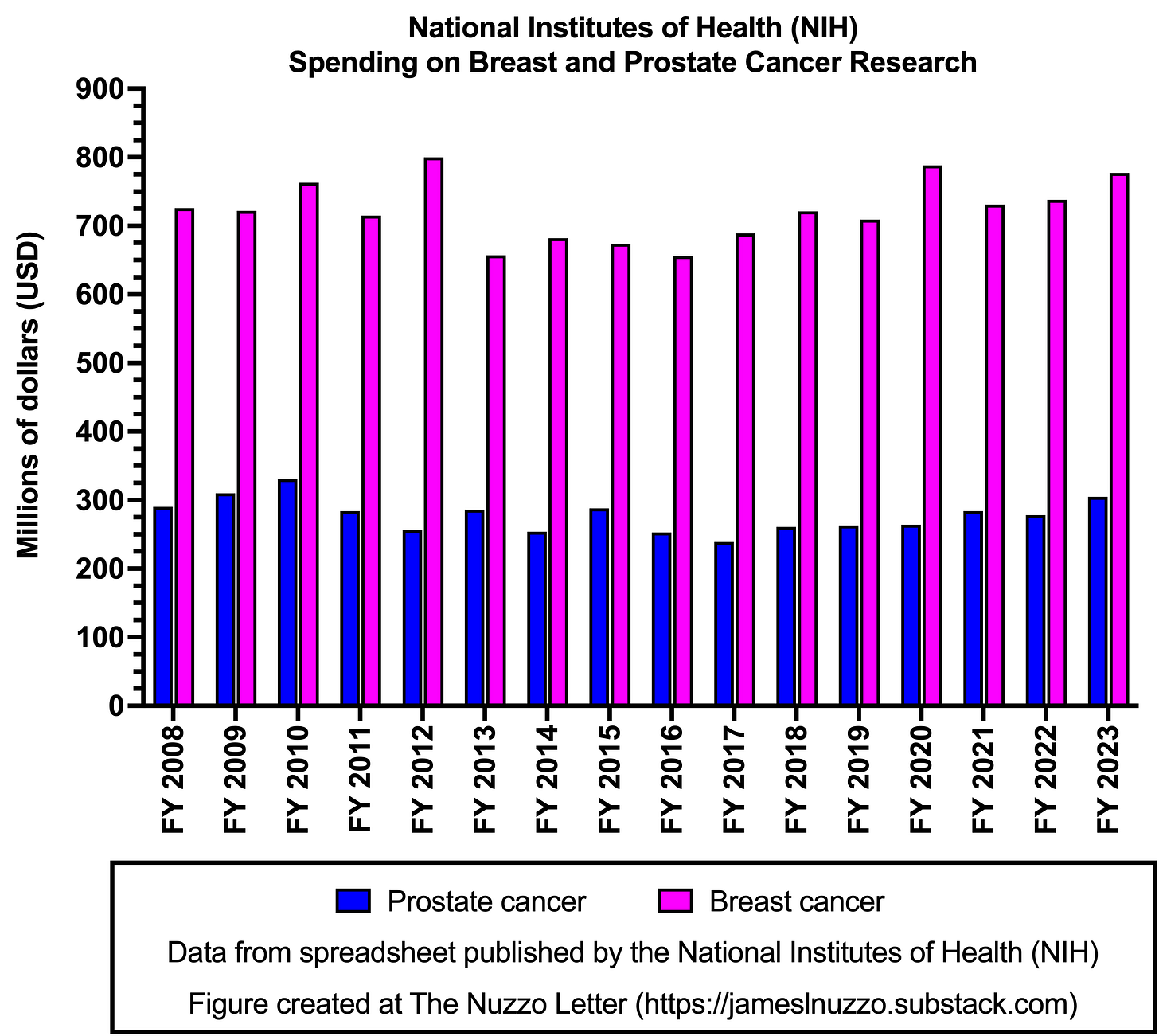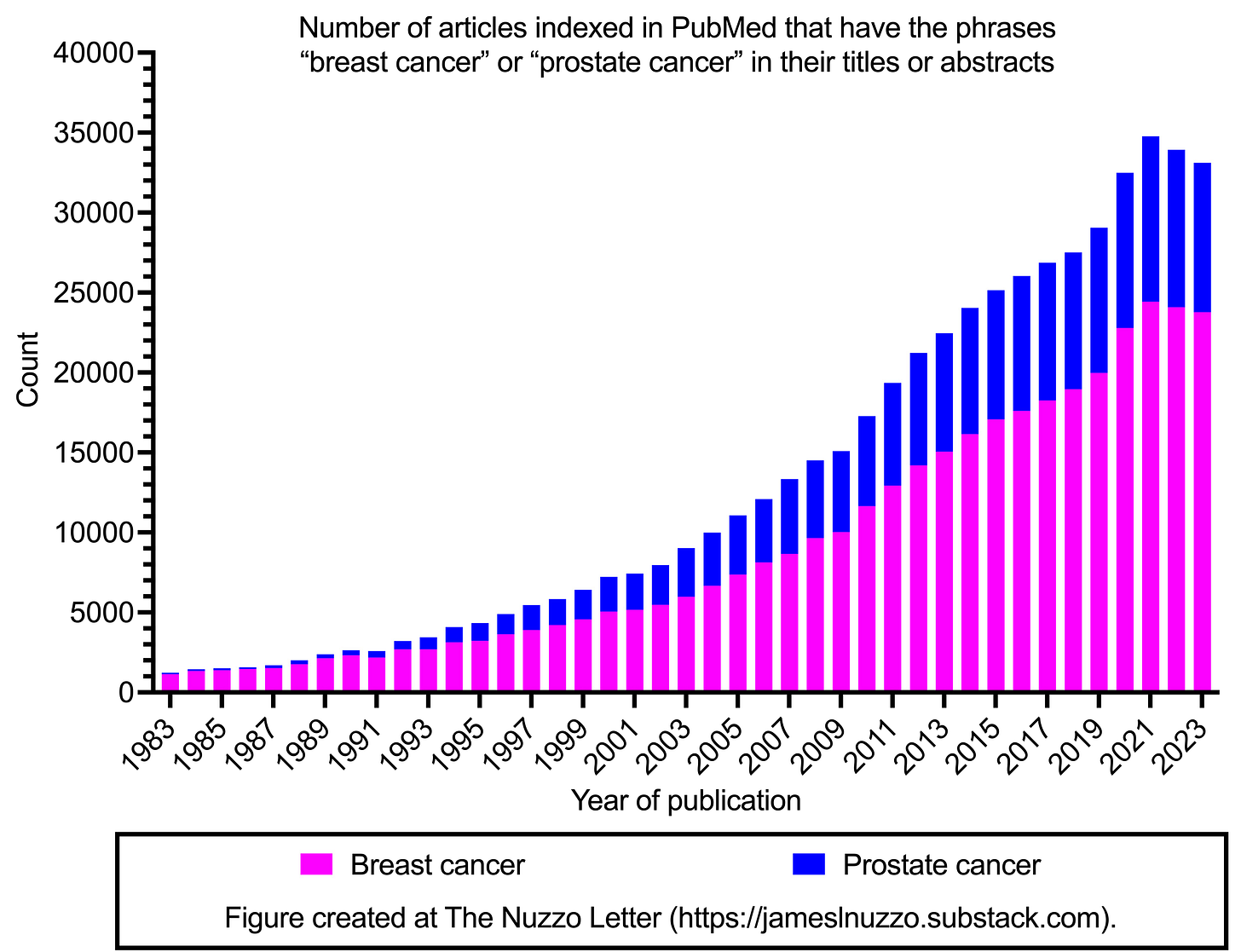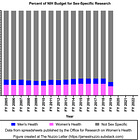This week’s graph illustrates the amount of money that the United States (U.S.) National Institutes of Health (NIH) invested into prostate and breast cancer research between financial years (FY) 2008-2023.
Key Points
Each year between 2008-2023, the U.S. government invested about 2.5 times more money into breast cancer than prostate cancer research.
On average, the U.S. government invested $700 million per year into breast cancer research and $270 million per year into prostate cancer research.
Source: NIH Research Portfolio Online Reporting Tools (RePORT). Accessed on December 28, 2024.
Bonus Commentary and Graphs
According to the U.S. Centers for Disease Control and Prevention (CDC), in 2021, 236,659 new cases of prostate cancerwere reported. In 2022, 33,363 men in the U.S. died from prostate cancer. The five-year relative survival rate for prostate cancer in the U.S. is 97%. Most prostate cancer is found in men who are 55 years of age or older.
In 2021, 272,454 new female breast cancer cases were reported. In 2022, 42,211 women in the U.S. died of breast cancer. The five-year relative survival rate for breast cancer in the U.S. is 91%. Most breast cancer is found in women who are 50 years of age or older.
When these data from prostate and breast cancer are considered, it is unclear if the current funding differences between the two conditions is appropriate. The reason that this is an important question to ask is because funding differences impact the amount of research completed on a topic, as this is the intent of disproportionate funding.
The first graph below shows the number of articles indexed in PubMed that have the phrases “breast cancer” or “prostate cancer” in their titles or abstract. Thousands more research articles are published each year on breast cancer than prostate cancer. The second graph expresses the number of articles as a ratio. Each year, about 2.5 times more research articles are published on breast cancer than prostate cancer. The difference in number of articles published on breast cancer and prostate cancer is roughly consistent with the size of the funding difference.
Finally, these data add to the long line of evidence that debunks the claim that women’s health is “underfunded” or “understudied.” Significant government resources have been allocated to breast cancer and other women’s health issues for many years.
Related Content at The Nuzzo Letter
SUPPORT THE NUZZO LETTER
If you appreciated this content, please consider supporting The Nuzzo Letter with a one-time or recurring donation. Your support is greatly appreciated. It helps me to continue to work on independent research projects and fight for my evidence-based discourse. To donate, click the DonorBox logo. In two simple steps, you can donate using ApplePay, PayPal, or another service. Thank you!











Thank you Jim. This is important info, especially the details about each type of cancer and how they are remarkably similar.
Yes, I "knew" this but it's great to see the actual data presented so clearly and convincingly. Very useful. Thanks again Jim.